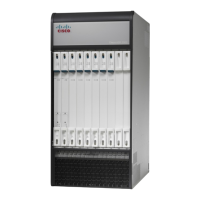CHAPTER 15
Troubleshooting
This chapter provides information and instructions for using the system command line interface (CLI) for
troubleshooting any issues that may arise during system operation.
•
Verifying Network Connectivity, page 159
•
Using the System Diagnostic Utilities, page 162
•
Generating an SSD, page 165
•
Configuring and Using the Support Data Collector, page 166
Verifying Network Connectivity
There are multiple commands supported by the system to verify and/or troubleshoot network connectivity.
Note that network connectivity can only be tested once system interfaces and ports have been configured and
bound.
The commands specified in this section should be issued on a context-by-context basis. Contexts act like
virtual private networks (VPNs) that operate independently of other contexts. Ports, interfaces, and routes
configured in one context cannot be tested from another context without additional configuration.
To switch between contexts enter the following command at the root prompt for the Exec mode:
[local]host_name# context context_name
context_name is the name of the context to which you wish to switch. The following prompt appears:
[context_name]host_name#
Using the ping or ping6 Command
The ping or ping6 command verifies the system's ability to communicate with a remote node in the network
by passing data packets between and measuring the response. This command is useful in verifying network
routing and if a remote node is able to respond at the IP layer.
ASR 5500 System Administration Guide, StarOS Release 21.5
159

